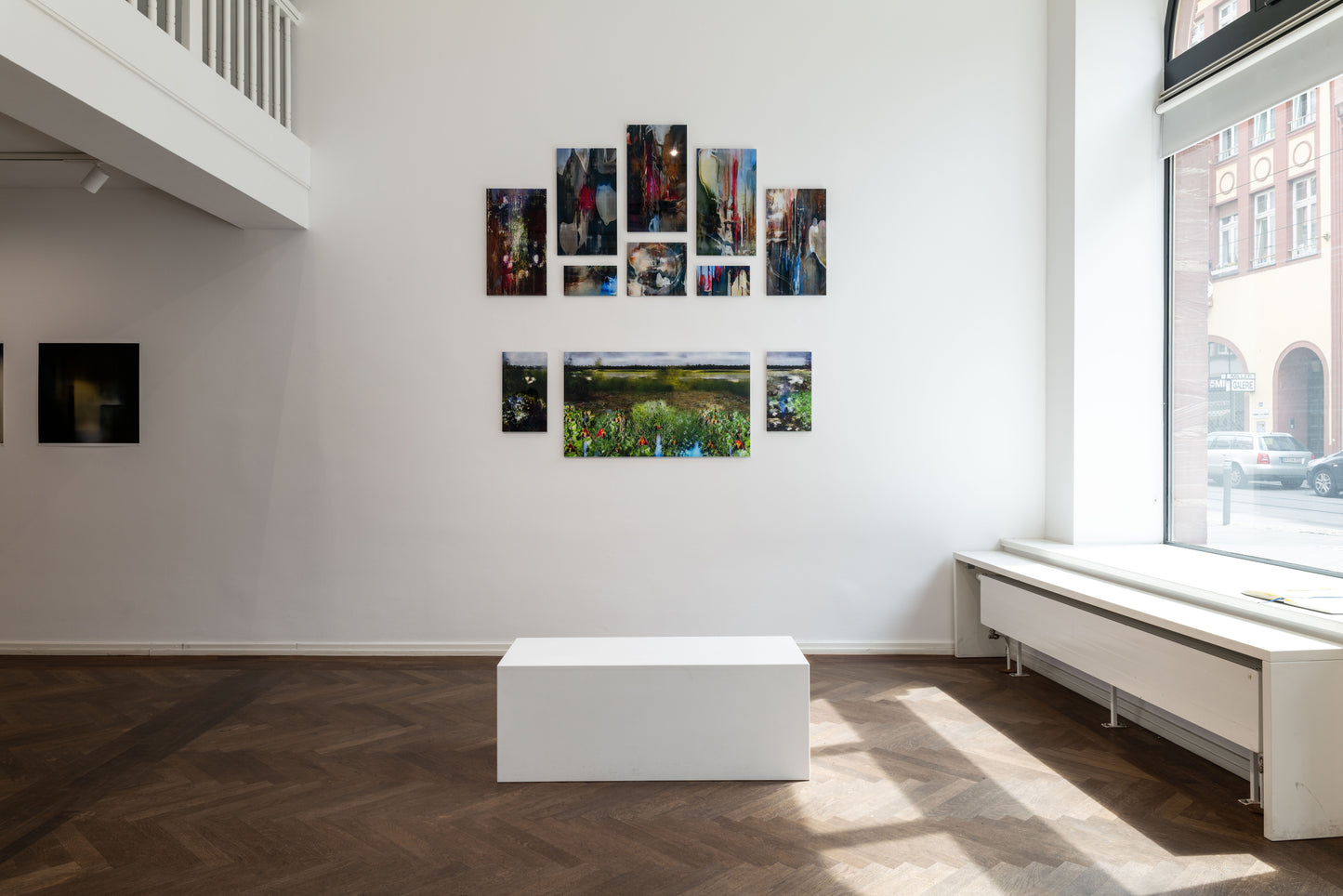Adoration of Artificial Nostalgia v0.1 (2009-2024)
Adoration of Artificial Nostalgia v0.1 (2009-2024)
Couldn't load pickup availability
Share
200x200cm
12 fine art pigment prints mounted on Aluminium, behind 4mm acrylic glass
Edition of 3 + 1 AP
Signed and stamped on verso
The main artwork of “Ursprünge” on the ground floor is an artwork created specifically for this space and for this exhibition. “Adoration of Artificial Nostalgia v0.1” is a play on the very idea of photography, picture making, the experience of interaction with the created, the trust in photography as a medium of truth.
The work consists of 12 individual panels that are arranged in an altar-like pattern. Many of the photographs used to train the AI are on display in the upper floor. (Visitors can reflect upon the completed work, while looking at some of the materials from which it was created.)
The work is divided into areas that play specific roles. The bottom part of the work is a triptych, with a main horizontal panel and two vertical ones. The central panel looks like a grey landscape that is being attacked by abstract plants and flowers which seem far too intensely coloured to be in any way rooted in reality.
In the background it appears that tree like objects are on the move. The light of
the background suggests that this might be an image of a storm, the foreground
seems to be closer to us and there are hints of a blue sky, but in unexpected places.
All of the images seem a bit out of focus and so the viewer is asked to imagine what they might be possibly looking at. In fact, the focus is set so that the viewer might experience moments of the artwork being more-dimensional and moving.
The side panels look more as if they were impressionistic views of a related landscape. The left panel is dark with some abstract elements that could possibly be rocks or something more sinister. The right panel seems to have elements of water and grass and perhaps some remnants of snow. The left panel appears to be descending into darkness, while the right panel appears to be nature emerging from darkness.
Above the triptych are 9 images, here the work appears to be dark and also somehow painted and ephemeral. There is a strong sense of symmetry and there seem to be hints of plants or other more spiritual pieces of the world.
The panels are dark and like many of the photographs in this show reflective. And so the viewer is invited to ask themselves what is the image and what is the reflection of the windows, the reality and themselves.
While these are static images, they are created to allow an interaction and questions. The arrangement of the panels and even the title seem to remind us of not just altars but perhaps even some echoes of specific altarpieces. However upon further inspection the viewer will discover that all of the panels are in the HDTV 16x9 format. (This format is in fact also the proportions of the main
panel of the Ghent altarpiece). And the version number contained in the name
implies that this is a work in progress and that more versions of this work could be
developed.
The question is how the images could progress. If this is the first of a series,
what will be the evolution of the work? Where did this work start, what did it
start from. What parts of it will continue in the future?
While the images are distilled from specific photographs, this is the most
forward leaning work in the exhibition and asks about the ability of
photography to move beyond it being the ultimate nostalgic medium to becoming a dynamic and changing one.
The work asks more questions than it answers. Some hints of a “why” are in the upstairs part of the gallery.



